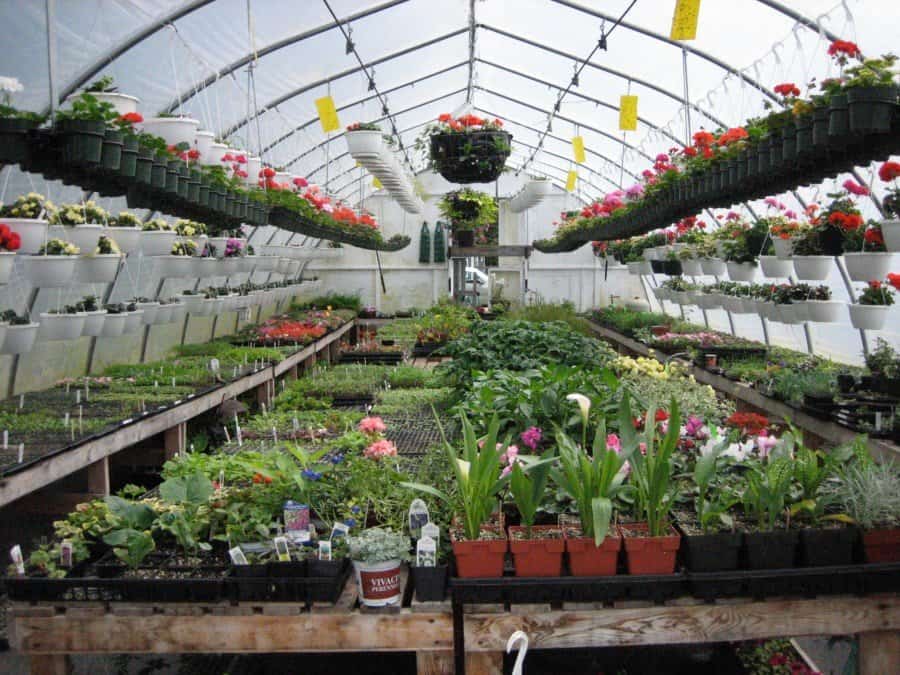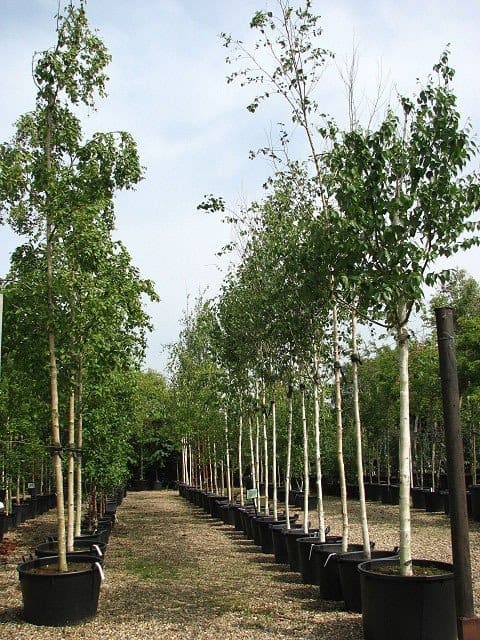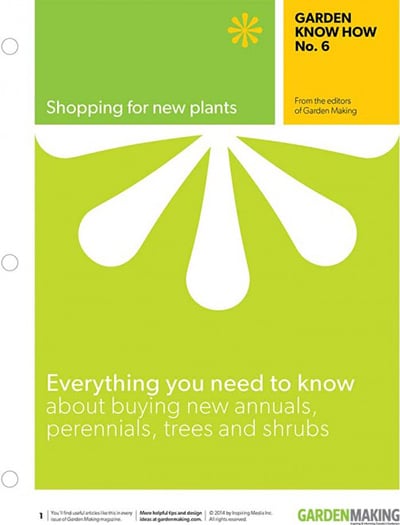
When shopping for new plants, it’s important to choose healthy, well-grown specimens that will rebound quickly after they’re transplanted into your garden. This is especially crucial when buying trees and shrubs — they’re a larger investment than annuals and perennials, and you want them to be with you for a long time.
1. Selecting annuals and perennials
Healthy annuals and perennials are stocky, compact and bushy. Tall, spindly growth usually indicates the plant has been grown in low light, wasn’t pruned or pinched properly, or has been growing in its pot for too long.
Pass up flowering annuals already in full bloom; look for specimens just coming into bud. In the case of perennials, the more stems or growth points, the better. Look for signs of new growth at the base of the plant.
Wilted leaves signal water stress. The plant may recover if it was a one-time occurrence, but it’s difficult to know if it has been water-stressed more than once — the plants can’t tell us.
Sticky, distorted or yellowing leaves, or leaves with streaks, blotches or mushy spots may be a symptom of disease or insect infestations. (Be sure to look under the leaves, too.) Not only may the plant be at risk, but your garden, too, if you bring it home. Don’t confuse powdery mildew with fertilizer residue on leaves. The latter appears as a more even coating of small white splashes or spots. This residue is easily washed off when you get the plant home.
A few weeds growing in the pot needn’t raise eyebrows, but if the soil surface is thick with undesirables, this may be a sign of neglect — those weeds have taken moisture and nutrients from the plant.
2. Check for healthy roots
Roots should reach to the bottom of the cell pack or pot, but not to the point that they crawl out of every drainage hole or thickly cover the top of the soil. Conversely, avoid plants with an underdeveloped root system, which may indicate poor health. However, a small plant surrounded by lots of soil may indicate something else. Put your finger into the top inch or so of soil. If all you feel is soil, the plant was likely just moved into a larger container, and it will have a larger price tag because of its pot size. The same-sized plant in a smaller container may be a better value.
Sometimes it helps to get a close look at the roots, but this involves tipping the plant on its side and gently slipping it out of its container. Most nurseries don’t mind if you’re careful and return the pot (and tag) back into position, but you may wish to ask first. Look for healthy, white roots with some soil visible around the perimeter of the root ball. Brown, mushy roots indicate a troubled plant.
If the roots are congested and tightly wound around the root ball — so dense that the soil is nearly invisible — the plant is potbound. This isn’t necessarily a deal breaker, but the plant is stressed and you’ll need to give it extra attention when planting.
3. Selecting trees and shrubs

Study leaves for signs of stress, disease or pests. If the plant is dormant, check if leaf buds are present and beginning to swell.
Select specimens with evenly spaced branches and, in the case of trees, a straight leader (central stem). A few broken twigs can easily be trimmed off, but jagged pruning cuts, broken limbs or nicked trunks may heal slowly and allow disease organisms to enter.
Inspect the base of trees and pass up specimens with open cracks or splitting bark. Also avoid those with roots circling the trunk at soil level (called girdling roots). This condition shortens the life of a tree.
Some nurseries wrap corrugated cardboard around tree trunks to prevent damage during shipping. Remove these wrappings after planting.
4. What’s a B&B tree?
Occasionally, nursery stock is sold balled and burlapped (called B&B) instead of in a plastic or fibreboard container. B&B plants are generally dug in late winter or early spring while dormant. The root ball is wrapped in burlap, then encircled with twine or a wire cage to maintain its integrity.
If the root ball is loose and crumbling inside the burlap, the roots may be damaged, jeopardizing the plant’s long-term survival. (Always lift a B&B plant by the wrapped base; if you lift it by its trunk or main stem, the weight of the soil may cause the root ball to break apart.)
After bringing a B&B specimen home, be sure to keep the covering and root ball moist to prevent roots from drying out before planting.
If thick, ropey roots encircle the root ball’s perimeter, try to tease a few away from the root ball before planting. If the roots are more like a tight mesh of netting, make three or four vertical cuts around the root ball, from top to bottom. Both methods encourage roots to grow out into the soil beyond the planting hole.
5. What about non-traditional sources for new plants?
Plant prices can be mighty attractive at big box stores, grocery chains and other retail outlets that set up temporary garden centres in spring and summer. Whether the plants are really a bargain or not depends on several factors. The plants may have travelled a long distance before reaching their destination, and may have begun life in a hardiness zone far removed from your garden’s zone. While waiting to be purchased, they may be cared for by staff unfamiliar with the importance of timely watering and protection from extremes in weather. The employees may not recognize signs of disease and insect infestation, and neglect to remove the sickly from the healthy.
That’s not to say there aren’t worthwhile plants and good bargains at these non-traditional sources. Sometimes buyers at head offices are savvy and bring in new introductions at a reasonable price, and have staff on hand to keep the specimens happy and healthy until they find a home in your garden. Ask if the plants are guaranteed and decide how upset you’ll be if they don’t survive the season.
Download these tips in our Garden Know How PDF

This free PDF download from Garden Making provides these tips on buying plants for your garden.
Get the free PDF
Email registration is required. We do not share emails.
[hide_from visible_to=”public”]
Register and download Shopping for New Plants
[/hide_from]
[hide_from visible_to=”member”]
You’re already registered, [member_first_name]!
Download Shopping for New Plants
[/hide_from]
View all the Garden Know How series
Garden Know How
Production and free distribution of the Garden Making Garden Know How series is made possible with the support of the Ontario Media Development Corp.


I would add that one should inquire whether plants had been grown with Neonicotin treatments and then not purchase the plants. Neonics are very bad for insects and consequently for birds, bats, amphibians etc. This product stays with the plants and in the soil for a very long time.